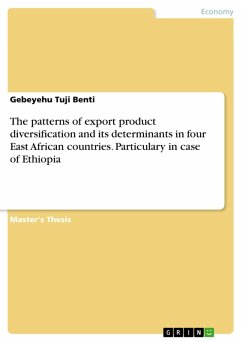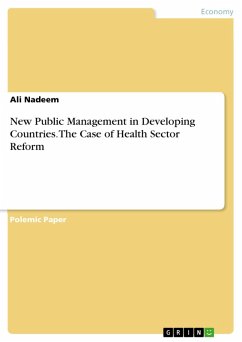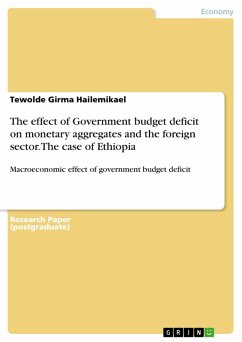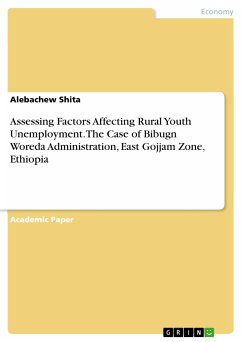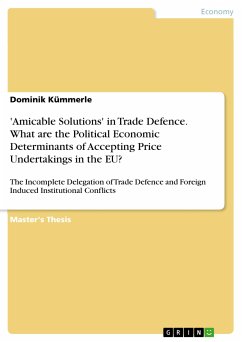Master's Thesis from the year 2016 in the subject Economics - Case Scenarios, , language: English, abstract: This paper assesses the patterns of export product diversification and identifies its determinants in four east African countries particularly focus on the case of Ethiopia. In addition to this, the study develops lessons from East Asian countries as best experience to know the way they have followed to achieve export product diversification with less than three decades. The research conducts Herfindahl-Hirschman index to see the degree of export product diversification, balanced panel data to examine determinants of export product diversification using GLS random effect model and descriptive statistics for the year 1995-2014. The statistical data collected from WDI, UNCTAD, ERCA, NBE and ADI data bases. The study also conducts Huasman specification test to select the best model for the study and Breusch-Peagan test to check the existence of heteroscedasticity and used one year lag-values in log form to detect the endogeneity problems and some of the variables like labor force and saving effect may not observed immediately on diversification. According to the finding, the HHI for east African countries export product diversification shows as they concentrated on few products. However it shows an improvements from year to year with gradual changes. In 1995-2014 Ethiopia, Rwanda and Ugandan export highly concentrated but since 2001 Ethiopia and Uganda export performance shows moderately improved compare to the previous years. The regression result of the study suggests that exchange rate, gross domestic saving, inflation, PGDP, openness to trade, labor force and foreign direct investment suggests as they have positive contribution to export diversification. Likely, the regression result of labor force showing the highest relatively compare to other explanatory variables. [...]
Dieser Download kann aus rechtlichen Gründen nur mit Rechnungsadresse in A, B, BG, CY, CZ, D, DK, EW, E, FIN, F, GR, HR, H, IRL, I, LT, L, LR, M, NL, PL, P, R, S, SLO, SK ausgeliefert werden.

